Showing Spotlights 1193 - 1200 of 2783 in category All (newest first):
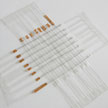 New solar cell technology allows your T-shirt to generate power from its interwoven solar cell wires. Researchers have developed a novel efficient wire-shaped polymer solar cell by incorporating a thin layer of titania nanoparticles between the photoactive material and electrode. An aligned carbon nanotube fiber enabled high flexibility and stability of the resulting polymer solar cell. These miniature polymer solar cell wires, when woven into textiles, can serve as a power source.
New solar cell technology allows your T-shirt to generate power from its interwoven solar cell wires. Researchers have developed a novel efficient wire-shaped polymer solar cell by incorporating a thin layer of titania nanoparticles between the photoactive material and electrode. An aligned carbon nanotube fiber enabled high flexibility and stability of the resulting polymer solar cell. These miniature polymer solar cell wires, when woven into textiles, can serve as a power source.
Apr 3rd, 2014
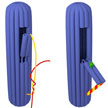 Not to be confused with the nanorobots of science fiction, for medical nanotechnology researchers a nanorobot, or nanobot, is a popular term for molecules with a unique property that enables them to be programmed to carry out a specific task. In what is the smallest 3D DNA origami box so far, researchers in Italy have now fabricated a nanorobot with a switchable flap that, when instructed with a freely defined molecular message, can perform a specifically programmed duty. Slightly larger nanocontainers with a controllable lid have already been demonstrated by others to be suitable for the delivery of drugs or molecular signals, but this new cylindrical nanobot has an innovative opening mechanism.
Not to be confused with the nanorobots of science fiction, for medical nanotechnology researchers a nanorobot, or nanobot, is a popular term for molecules with a unique property that enables them to be programmed to carry out a specific task. In what is the smallest 3D DNA origami box so far, researchers in Italy have now fabricated a nanorobot with a switchable flap that, when instructed with a freely defined molecular message, can perform a specifically programmed duty. Slightly larger nanocontainers with a controllable lid have already been demonstrated by others to be suitable for the delivery of drugs or molecular signals, but this new cylindrical nanobot has an innovative opening mechanism.
Apr 2nd, 2014
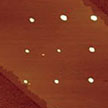 Existing nanofluidic approaches to facilitate the manipulation of ultra-small amounts of liquids usually require their confinement within quasi-1D nanochannels or nanopores. In these devices, the movement of the liquid objects must follow pre-designed routes. Researchers have now demonstrated a new platform for digital nanofluidics where water nanodroplets are trapped between a mica surface and graphene. Here, with the assistance of a graphene protection layer and ice-like lubricant monolayer, water nanodroplets can be moved, merged, separated, and patterned into regular arrays freely within a two-dimensional channel.
Existing nanofluidic approaches to facilitate the manipulation of ultra-small amounts of liquids usually require their confinement within quasi-1D nanochannels or nanopores. In these devices, the movement of the liquid objects must follow pre-designed routes. Researchers have now demonstrated a new platform for digital nanofluidics where water nanodroplets are trapped between a mica surface and graphene. Here, with the assistance of a graphene protection layer and ice-like lubricant monolayer, water nanodroplets can be moved, merged, separated, and patterned into regular arrays freely within a two-dimensional channel.
Mar 31st, 2014
 Concern about the depletion of global water resources has grown rapidly in the past decade due to our increasing global population and growing demand for other diverse applications. Since only 2.5% of the Earth's water is fresh, it has been reported that almost half of the world's population is at risk of a water crisis by the year 2025. Accordingly, significant research efforts have been focused on the desalination of brackish/seawater and the remediation and reuse of wastewater to meet the agricultural, industrial, and domestic water demands.
Concern about the depletion of global water resources has grown rapidly in the past decade due to our increasing global population and growing demand for other diverse applications. Since only 2.5% of the Earth's water is fresh, it has been reported that almost half of the world's population is at risk of a water crisis by the year 2025. Accordingly, significant research efforts have been focused on the desalination of brackish/seawater and the remediation and reuse of wastewater to meet the agricultural, industrial, and domestic water demands.
Mar 27th, 2014
 Individual graphene sheets and their functionalized derivatives have been used to remove metal ions and organic pollutants from water. These graphene-based nanomaterials show quite high adsorption performance as adsorbents. However they also cause additional cost because the removal of these adsorbent materials after usage is difficult and there is the risk of secondary environmental pollution unless the nanomaterials are collected completely after usage. One solution to this problem would be the assembly of individual sheets into three-dimensional (3D) macroscopic structures which would preserve the unique properties of individual graphene sheets, and offer easy collecting and recycling after water remediation.
Individual graphene sheets and their functionalized derivatives have been used to remove metal ions and organic pollutants from water. These graphene-based nanomaterials show quite high adsorption performance as adsorbents. However they also cause additional cost because the removal of these adsorbent materials after usage is difficult and there is the risk of secondary environmental pollution unless the nanomaterials are collected completely after usage. One solution to this problem would be the assembly of individual sheets into three-dimensional (3D) macroscopic structures which would preserve the unique properties of individual graphene sheets, and offer easy collecting and recycling after water remediation.
Mar 26th, 2014
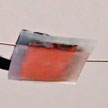 By miniaturizing microbial fuel cells, it becomes possible to build miniature energy harvesters that could power lab-on-chip or point-of-care diagnostics devices independent of any external power source. Because micro-sized microbial fuel cells utilize less electrode area and less liquid fuel volume than their macro-sized counterparts, optimizing the electrodes and the fuel sources are the most important factors in designing a micro-sized MFC for maximum power production.
By miniaturizing microbial fuel cells, it becomes possible to build miniature energy harvesters that could power lab-on-chip or point-of-care diagnostics devices independent of any external power source. Because micro-sized microbial fuel cells utilize less electrode area and less liquid fuel volume than their macro-sized counterparts, optimizing the electrodes and the fuel sources are the most important factors in designing a micro-sized MFC for maximum power production.
Mar 24th, 2014
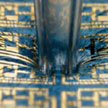 Stretchable energy storage and conversion devices are key components for the fabrication of complete and independent stretchable systems. A recent review summarizes the recent progresses in the developments of stretchable power sources including supercapacitors, batteries and solar cells. It discusses representative structural and material designs to impart stretchability to the originally rigid devices and analyze advantages and drawbacks associated with the various fabrication methods. It also presents summaries of the research progresses along with future development directions.
Stretchable energy storage and conversion devices are key components for the fabrication of complete and independent stretchable systems. A recent review summarizes the recent progresses in the developments of stretchable power sources including supercapacitors, batteries and solar cells. It discusses representative structural and material designs to impart stretchability to the originally rigid devices and analyze advantages and drawbacks associated with the various fabrication methods. It also presents summaries of the research progresses along with future development directions.
Mar 20th, 2014
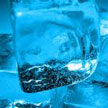 Ice accumulation is not just a cost and safety problem for the airline industry and other transportation areas, together with undesired environmental impacts. Here are some examples: Transmission lines and power network towers may deform or even collapse with the burden of excess amount of ice; ice accretion on wind turbine blades can cause a production loss as much as 50% of the annual production; frost and ice accumulation in refrigerators and heat exchangers results in a decrease of heat transfer efficiency. Therefore, great efforts have been made to understand the mechanism of icing and investigations on anti-icing and deicing have been extensively carried out. Various anti-icing and deicing methods have been developed such as for instance nanocoatings and other nanostructured surfaces.
Ice accumulation is not just a cost and safety problem for the airline industry and other transportation areas, together with undesired environmental impacts. Here are some examples: Transmission lines and power network towers may deform or even collapse with the burden of excess amount of ice; ice accretion on wind turbine blades can cause a production loss as much as 50% of the annual production; frost and ice accumulation in refrigerators and heat exchangers results in a decrease of heat transfer efficiency. Therefore, great efforts have been made to understand the mechanism of icing and investigations on anti-icing and deicing have been extensively carried out. Various anti-icing and deicing methods have been developed such as for instance nanocoatings and other nanostructured surfaces.
Mar 18th, 2014
 New solar cell technology allows your T-shirt to generate power from its interwoven solar cell wires. Researchers have developed a novel efficient wire-shaped polymer solar cell by incorporating a thin layer of titania nanoparticles between the photoactive material and electrode. An aligned carbon nanotube fiber enabled high flexibility and stability of the resulting polymer solar cell. These miniature polymer solar cell wires, when woven into textiles, can serve as a power source.
New solar cell technology allows your T-shirt to generate power from its interwoven solar cell wires. Researchers have developed a novel efficient wire-shaped polymer solar cell by incorporating a thin layer of titania nanoparticles between the photoactive material and electrode. An aligned carbon nanotube fiber enabled high flexibility and stability of the resulting polymer solar cell. These miniature polymer solar cell wires, when woven into textiles, can serve as a power source.

 Subscribe to our Nanotechnology Spotlight feed
Subscribe to our Nanotechnology Spotlight feed





